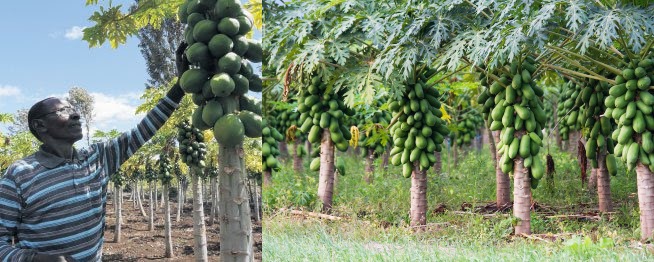Festus Mutiga, a retired police officer from Meru, never looked back after venturing into farming after years of serving in the government.
The farmer revealed he went for an early retirement to explore opportunities in other sectors. He later embraced farming, growing melons and butternuts on his farm in Mbeu, Tigania West, Meru County.
However, the venture was not as profitable as he wished, prompting him to divert to pawpaw farming thanks to agricultural extension officers from Meru Greens Horticulture (MGH), who introduced him to the fruit.
Charawe Maina: The hydroponic expert harvesting millions from eighth of acre
“To me the company was a godsend. About that time, watermelons were giving me Sh25,000 after three months, thus, I wanted to try something else. I used the money that I got from selling melons to buy pawpaw seedlings, which I planted on one acre,’’ he says.
The farmer notes that his first harvest was 384kg which fetched him Sh20,000. This inspired him to continue farming the fruit and has since been harvesting an average of 300kg of fruits weekly.
He sells the fruits to MGH, a high-end market supplier, earning over Sh15,000 every week. The company buys a kilo of grade one fruits at Sh50 and Sh45 for grade two. Each tree produces a kilo of the fruit.
“In the next few months, I will be fetching more than Sh20,000 a month. I want to increase the stems to 3,000 by cultivating the remaining two acres.” Says Mutiga.
He notes that pawpaw is prone to various pests and diseases, with mites and blight being the biggest nightmares. To curb this, he applies pesticides to kill mites and prunes the trees constantly to prevent blight.
Ayub Mutangili, an agronomist with MGH, says a farmer like Mutiga can make up to Sh50,000 a week from one acre when the trees reach peak production in three years, whereby each tree can produce over a kilo a week.
The agronomist notes that with good agricultural practices, a farmer can harvest continuously with yields increasing for three years when the tree reaches optimum production.








